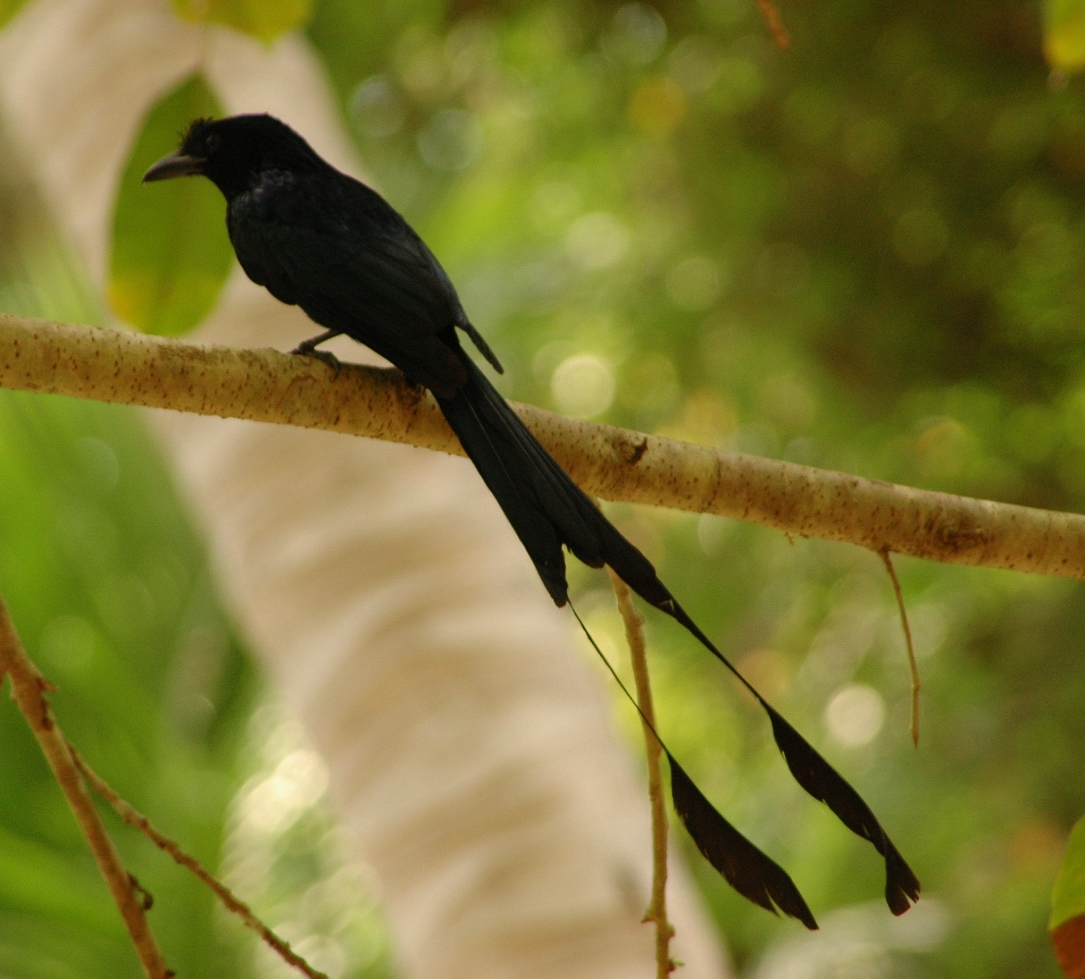 |
| Photo by Kai Hendry (Wikipedia) |
Common name:
greater racket-tailed drongo (en); drongo-de-raquetes-grande (pt); drongo à raquettes (fr); drongo de raquetas grande (es); flaggendrongo (de)
Taxonomy:
Order Passeriformes
Family Dicruridae
Range:
This species is found in India and Nepal, through Bangladesh and Indochina and into Indonesia.
Size
These birds are 31-36 cm long and weigh 70-125 g.
Habitat:
The greater racket-tailed drongo is found in tropical moist forests, swamp forests, mangroves and also in degraded patches of former forests and plantations.
Diet:
They have a varied diet, including insects such as ants, bees, beetles, dragonflies, locusts, mantids, moths and termites, but also nectar and fruits. They catch insects either in flight or by pounding on them from the air.
Breeding:
These birds breed in February-August. The nest is saucer-shaped and built by both sexes. It is made of intricately intertwined roots and leaves, lined with finer materials and placed in a fork in a tree. The female lays 3-4 creamy-white eggs with reddish-brown blotches, which are incubated by both sexes for 15-17 days. The chicks are fed by both parents and fledge 17-28 days after hatching, but oonly become fully independent 4-6 weeks later.
Conservation:
IUCN status – LC (Least Concern)
The greater racket-tailed drongo has a very large breeding range and is described as locally common to uncommon. There is no information regarding population trends, but they are negatively affected by ongoing habitats loss within their range, namely in Java and Bali.







